How to Use a 3D Printing Farm to Manufacture Lamps
Summary
- LimeLite is a lighting manufacturer with nearly 23 years of experience in the business.
- The company has introduced three lighting collections made on Zortrax 3D printers.
- LimeLite's has set up a 3D printing farm with over 30 3D printers working almost 24/7.
LimeLite is an Australian company making lighting fixtures on a 3D printing farm of nearly 30 Zortrax M200 and M200 Plus 3D printers. It was founded back in 1996 and quickly expanded into one of the largest lighting manufacturers in the country with a national distribution network of agents. With three already functioning manufacturing facilities, setting up a 3D printing farm to complement them was a step taken to create more value for institutional customers and build up the LimeLite’s offer targeted at decorative lighting market.
Consultants Turned Manufacturers
LimeLite began as a consulting and distribution company advising customers on the lighting solutions for their needs. Facts LimeLite’s 3D printing farm stemmed from a joint project done with the Swinburne University OnTrack is the first range of LimeLite’s lamps made on 3D printers. 3D printed lighting is aimed and business customers like hotels or retail stores. Paul Hearne, the founder of LimeLite, then started a manufacturing business moving from selling the lamps made by others to creating his own range. Two years ago Hearne attended a seminar on 3D printing at Swinburne University. He realized the flexibility offered by additive technologies could help build more customized lamps at lower cost in comparison to having them injection molded. Such highly customized lamps were meant for large customers like hotels retailers, restaurants, or cafes. The idea was to design and then manufacture lighting appliances that would fit into ideas architects had for interiors in new buildings.
To make that happen Hearne launched a joint project with industrial designers working at Swinburne University. The project resulted with the “On Track”, the first lighting collection in LimeLite’s range that was almost entirely 3D printed. “On Track” was designed for additive manufacturing from the get go. Once the 3D printed lamps hit the market, Hearne started to expand their 3D printing operation which at this moment includes the production of three collections of lamps along with custom-made jigs supporting LimeLite’s traditional manufacturing plants.
Inside the B2B Decorative Lighting
The investment in the farm of Zortrax 3D printers was intended to achieve following goals. First, the founder wanted his company to get into decorative lighting market.Facts 3D printers allowed LimeLite to enter a decorative lighting market. Flexible manufacturing makes it possible to offer tailored lamps to individual customers. 3D printers make it easier to implement new technologies into existing lamp designs. That was a difficult move to make because LimeLite had experience in providing standardized lighting solutions for schools or hospitals. Decorative lighting was a different story because the lamps had to fit skillfully desired interiors of hotels or cafes. Apart from getting the design right, the traditional manufacturing costs in this field proved to be higher as the decorative lighting range had more variety. According to Nigel Brockbank, LimeLite’s chief designer and 3D printing specialist, the tooling costs alone for one of his idea amounted to $40k. Then there was flexibility. “Recently we’ve had a customer who wanted to buy one of our lamps, but with a slightly changed design. The lamp had a visible heat sink at the back and the customer wanted it covered. With traditional manufacturing technologies we would have to pay for retooling just to make the casing longer to cover the heat sink. With 3D printers we could adjust in a couple of hours”, says Brockbank.
Then there was flexibility. “Recently we’ve had a customer who wanted to buy one of our lamps, but with a slightly changed design. The lamp had a visible heat sink at the back and the customer wanted it covered. With traditional manufacturing technologies we would have to pay for retooling just to make the casing longer to cover the heat sink. With 3D printers we could adjust in a couple of hours”, says Brockbank.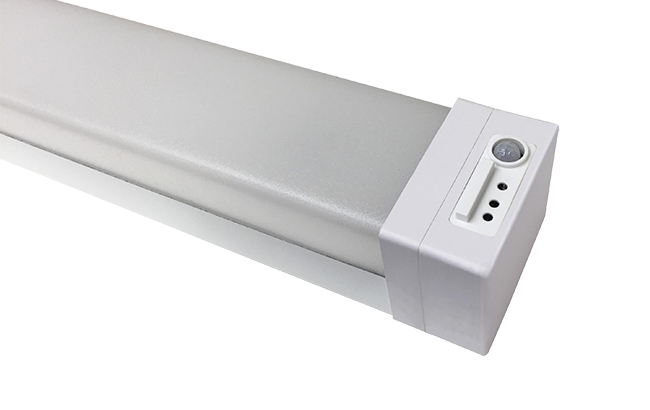 Finally, there was the issue of implementing new technologies that appear on the lighting market. “To give an example, Philips introduced a new sensor we wanted to use in one of our lamps. To have the lamp made with this new sensor integrated into its design would take weeks or months if we were to do this with injection molding. With 3D printers we could integrate this sensor in 3 days”, claims Brockbank.
Finally, there was the issue of implementing new technologies that appear on the lighting market. “To give an example, Philips introduced a new sensor we wanted to use in one of our lamps. To have the lamp made with this new sensor integrated into its design would take weeks or months if we were to do this with injection molding. With 3D printers we could integrate this sensor in 3 days”, claims Brockbank.
Flexible On Demand Production
At this moment LimeLite is using its farm of Zortrax 3D printers to manufacture two collections of lighting: On Track and Pendant. Facts With the 3D printing farm, it takes 3 days to go from a sketch to a functional lamp. LimeLite has no costs of tooling and storage. An option to make lamps based on provided sketches is aimed at business customers. The farm also helped to integrate the Philips sensors into the Linear range that is mostly made with traditional manufacturing technology. “We have opened an option for customers to come with their own architects and discuss the lighting made for a particular interior”, says Brockbank. In the first step of this new process, an architect needs to provide LimeLite with sketches of the lamp he or she wants in the interior. “Then we will make a model suitable for 3D printing, make a prototype, and have it delivered to the customer to see if they are happy with it”, explains Brockbank. Upon the customer’s acceptance, the company will produce the newly designed lamp on order.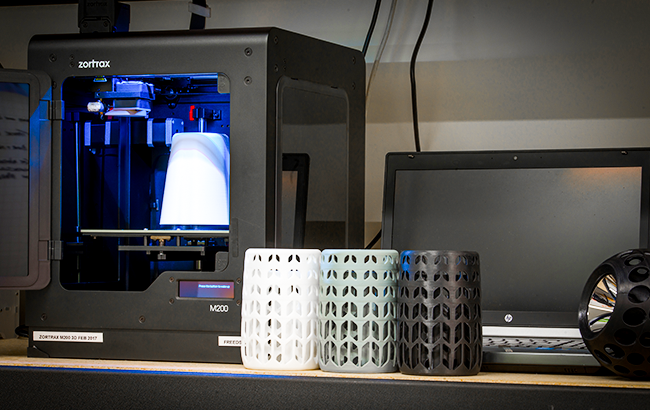 According to Brockbank, LimeLite’s 3D printing farm can produce roughly 20 lamps per day. “This is not the full capacity as we usually have some of the printers committed to other tasks like making jigs or prototyping new lamps. Typically, 20 machines are used for production and 10 are doing other things”, says Brockbank. Typically the both 3D printing and injection molding are used for production. Standardized parts, like the ones with which a lamp is attached to a ceiling, are injection molded. Decorative element that bring out a particular style of the lamp are 3D printed.
According to Brockbank, LimeLite’s 3D printing farm can produce roughly 20 lamps per day. “This is not the full capacity as we usually have some of the printers committed to other tasks like making jigs or prototyping new lamps. Typically, 20 machines are used for production and 10 are doing other things”, says Brockbank. Typically the both 3D printing and injection molding are used for production. Standardized parts, like the ones with which a lamp is attached to a ceiling, are injection molded. Decorative element that bring out a particular style of the lamp are 3D printed.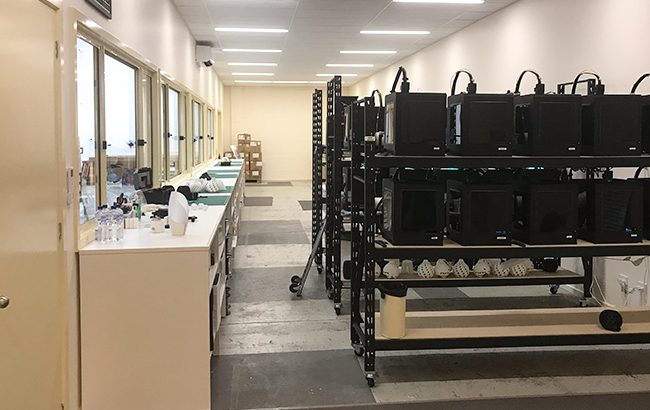
At this point the company does not use any post processing for their 3D printed lamps. “We are happy with the quality of surfaces and consistency of Zortrax 3D printers. Currently we see no reasons for post-processing, but it is not to say it is not going to change in the future”, he claims.
Why 3D Printing Farms are Cost-Effective
3D printers allow to achieve designs that are difficult or downright impossible to achieve with injection molding technology.Facts 3D printers can produce lamps impossible to make with injection molding. 3D printed lamps are easy to assemble. Parts can clip into each other so there is no need for screws or glues. “We can also make the assembly easier. It’s possible for us to produce parts that simply clip into each other so there is no need for using glues or screws to put them together”, says Brockbank. And the entire process turned out to be quite cost-effective.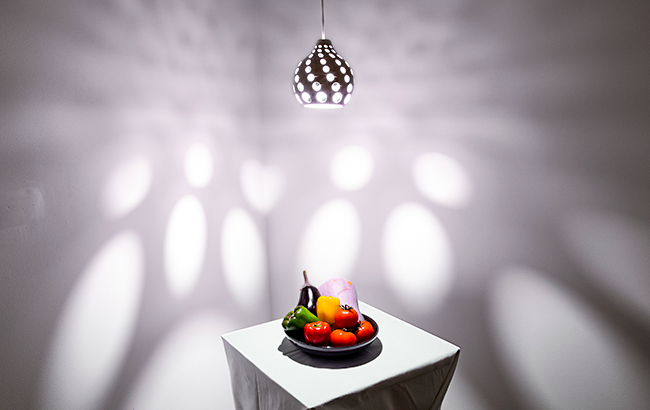 For casings manufactured on the daily basis LimeLite uses a locally made, recycled filament to bring the cost of the material down. According to Brockbank, the manufacturing cost of most parts stands at just $1, sometimes going below that into cents. “Plus, we don’t have tooling costs, and don’t have to hold stock. As my boss puts it, he doesn’t have money laying on the shelf”, he adds.
For casings manufactured on the daily basis LimeLite uses a locally made, recycled filament to bring the cost of the material down. According to Brockbank, the manufacturing cost of most parts stands at just $1, sometimes going below that into cents. “Plus, we don’t have tooling costs, and don’t have to hold stock. As my boss puts it, he doesn’t have money laying on the shelf”, he adds.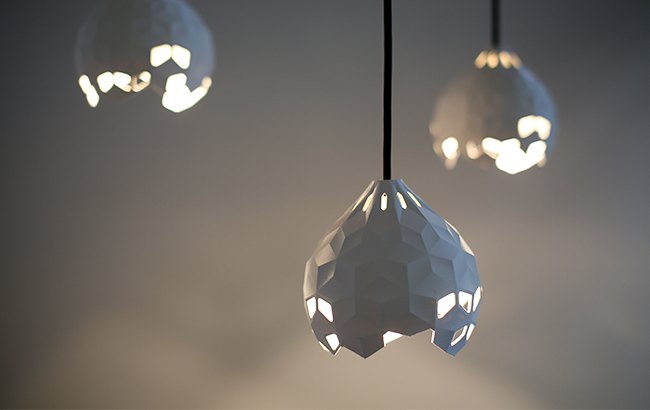 The injection molding is obviously faster. “We we don’t need that speed in decorative lighting”, says Brockbank. “Sure you can make thousands of lamps in a week rather than in a couple of months, but then you need to keep stock and pay for it. With 3D printers our production is closely matched to demand. We make lamps as the orders come in. At the end of the day, in our business case, using 3D printers for production is cheaper than injection molding, when tooling and storage costs are included”, he explains.
The injection molding is obviously faster. “We we don’t need that speed in decorative lighting”, says Brockbank. “Sure you can make thousands of lamps in a week rather than in a couple of months, but then you need to keep stock and pay for it. With 3D printers our production is closely matched to demand. We make lamps as the orders come in. At the end of the day, in our business case, using 3D printers for production is cheaper than injection molding, when tooling and storage costs are included”, he explains.
Mass Customized Lamps Hit the Market
Setting up a farm of Zortrax 3D printers allowed LimeLite to enter a decorative lighting market with unique, highlyFacts LimeLite chose Zortrax for its reliability and ease of use. With the lack of storage and tooling costs, 3D printed lamps are price-competitive. LimeLite has plans to expand its 3D printing farm to roughly 200 machines. customizable designs. Without tooling and storage costs necessary to bear with injection molding technology, the company also managed to stay price-competitive. “We wish to expand our 3D printing operation in the future. For example, we already have prototypes of lamps made with Z-GLASS, Zortrax translucent filament. We also want to buy new printers, this time those will be Zortrax M200 Plus as we need a capability to print with flexible materials”, says Brockbank.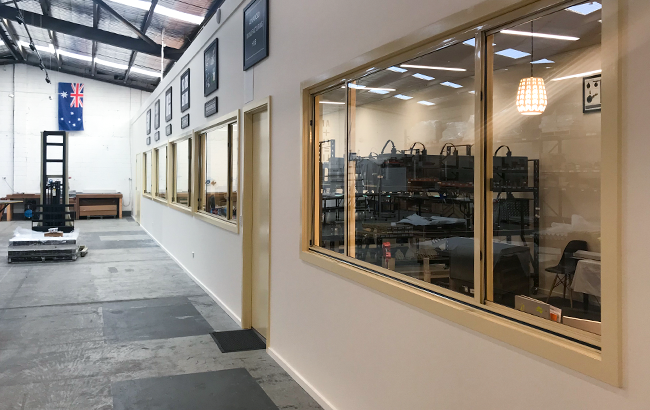 “Personally, I have extensive experience with 3D printers. I have been working with them for years. At the university level, I thought students how to build those machines. And I have chosen Zortrax despite there being cheaper alternatives on the market. The first reason is consistent quality of prints. That’s important when you use printers for manufacturing. Then there is low maintenance cost.
“Personally, I have extensive experience with 3D printers. I have been working with them for years. At the university level, I thought students how to build those machines. And I have chosen Zortrax despite there being cheaper alternatives on the market. The first reason is consistent quality of prints. That’s important when you use printers for manufacturing. Then there is low maintenance cost.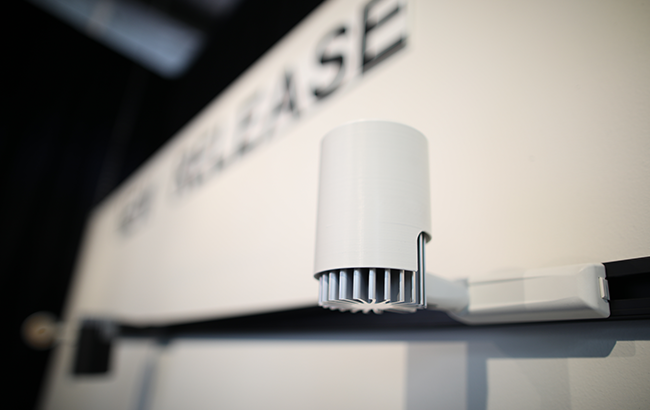 Last but not least, there is the ease of use. I know how to make a rep-rap work well, but I am an additive manufacturing engineer with years of experience. I wouldn’t be able to do it without all that knowledge. Zortrax machines can be operated by untrained staff. When the operation scales up, you need other people to be able to take responsibility for running it. It’s not possible with cheaper printers. It’s possible with Zortrax”, says Brockbank.
Last but not least, there is the ease of use. I know how to make a rep-rap work well, but I am an additive manufacturing engineer with years of experience. I wouldn’t be able to do it without all that knowledge. Zortrax machines can be operated by untrained staff. When the operation scales up, you need other people to be able to take responsibility for running it. It’s not possible with cheaper printers. It’s possible with Zortrax”, says Brockbank.
Watch the video below to see how Zortrax 3D printers can work in large 3D printing farms.